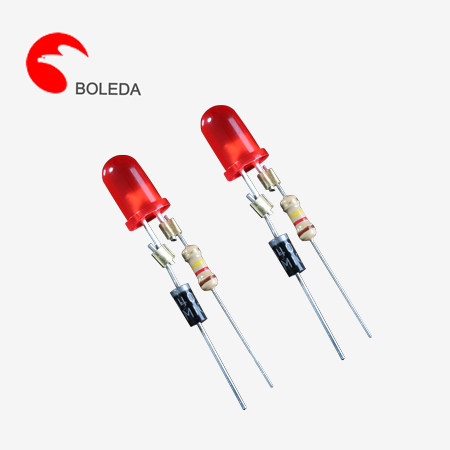Led Assembly process Improvement: Unleashing Potential Through Innovative Methods
Introduction
In recent years, Light Emitting Diodes (LEDs) have emerged as a superior alternative to traditional lighting systems due to their energy efficiency, longer lifespan, and environmental friendliness. As demand for LEDs continues to grow, manufacturers are under increasing pressure to improve the efficiency and effectiveness of their assembly processes. This paper aims to discuss the potential for process improvement in LED assembly, focusing on the application of innovative methods to enhance productivity, reduce costs, and improve overall quality.
Current Challenges in LED Assembly
LED assembly involves the delicate process of placing tiny semiconductor chips onto substrates and connecting them with wires. This process is time-consuming and requires high precision to ensure proper functionality. However, several challenges exist in the current assembly methods:
1. Manual labor: The reliance on manual labor for assembly is not only time-consuming but also prone to human errors. This increases the risk of defects and reduces overall productivity.

2. Inefficient material handling: The movement of materials between different assembly stages is often inefficient, leading to delays and increased lead times.
3. Low throughput: The current assembly methods may not efficiently utilize the available resources and provide optimal throughput, resulting in a lower overall production rate.
4. Quality control: The need for specialized equipment to test the functionality and quality of assembled LEDs can be a bottleneck in the production process, leading to delays and increased costs.
Innovative Methods for Led Assembly process Improvement
To overcome the challenges mentioned above, manufacturers can explore the following innovative methods for Led Assembly process improvement:
1. Automation: Introducing automation in the assembly process can significantly reduce human errors, increase precision, and improve overall productivity. Automated systems can handle delicate tasks such as chip placement and wire bonding more efficiently, leading to improved quality and reduced assembly time.
2. Advanced material handling: Implementing advanced material handling systems, such as robotic arms and conveyors, can streamline the movement of components between different assembly stages. This will reduce lead times, minimize delays, and improve overall efficiency.
3. Lean manufacturing principles: Implementing lean manufacturing principles, such as reducing waste, optimizing processes, and improving communication between different stages of assembly, can lead to improved throughput and reduced costs.
4. Quality control automation: Investing in automated quality control systems can eliminate bottlenecks in the production process. These systems can quickly test the functionality and quality of assembled LEDs, ensuring only defect-free products proceed further in the assembly process.
Benefits of Innovative Methods for Led Assembly process Improvement
Implementing innovative methods for Led Assembly process improvement can provide several benefits for manufacturers:
1. Increased productivity: Automation and advanced material handling systems can significantly increase productivity by reducing assembly time, minimizing delays, and optimizing resource utilization. This allows manufacturers to meet higher demand without compromising on quality.
2. Cost reduction: By streamlining processes, reducing waste, and eliminating bottlenecks, manufacturers can achieve cost reductions in the assembly process. This can lead to improved profitability and increased competitiveness in the market.
3. Enhanced quality: The use of automated quality control systems ensures that only defect-free products proceed further in the assembly process, resulting in improved overall quality. This leads to customer satisfaction and a positive brand image.
4. Improved worker safety: Automation reduces the reliance on manual labor, reducing the risk of injuries and improving worker safety. This creates a safer working environment for employees.
Conclusion
Led Assembly process improvement is crucial for manufacturers to meet the growing demand for LEDs efficiently. By implementing innovative methods such as automation, advanced material handling, lean manufacturing principles, and automated quality control, manufacturers can unlock the potential in their assembly processes. This will result in increased productivity, cost reduction, enhanced quality, and improved worker safety. Embracing these innovative methods will enable manufacturers to stay competitive in the rapidly expanding LED market.

 NE-2 orange color
NE-2 orange color 410 613 Neon lamp with resistor, cable and sleeve, resistor neon tubes
410 613 Neon lamp with resistor, cable and sleeve, resistor neon tubes 513 616 Neon lamp with resistor and cable and sleeve and ring terminal L terminal
513 616 Neon lamp with resistor and cable and sleeve and ring terminal L terminal E10BA9S Plastic Shell Tin soldering, butt welded, crimped Neon Glow Lamps
E10BA9S Plastic Shell Tin soldering, butt welded, crimped Neon Glow Lamps Fuse type Neon Lamp Tin soldering, butt welded, crimped with resistor for test pen
Fuse type Neon Lamp Tin soldering, butt welded, crimped with resistor for test pen 6 mm Neon indicator lamps, indicating lamps with resistor and PVC cableSilicone cable
6 mm Neon indicator lamps, indicating lamps with resistor and PVC cableSilicone cable 10 mm Neon indicator lamps, signal lights with PVC cable
10 mm Neon indicator lamps, signal lights with PVC cable 12 mm Neon indicator lamps red color with Crimped resistor PVC cable
12 mm Neon indicator lamps red color with Crimped resistor PVC cable 3mm5mm Led light, LED lamp with resistor and diode
3mm5mm Led light, LED lamp with resistor and diode 3 mm leds roundStrawflat shape, water cleardifussed
3 mm leds roundStrawflat shape, water cleardifussed 5 mm leds roundStraflat shape, water cleardifussed
5 mm leds roundStraflat shape, water cleardifussed































Comment
(0)